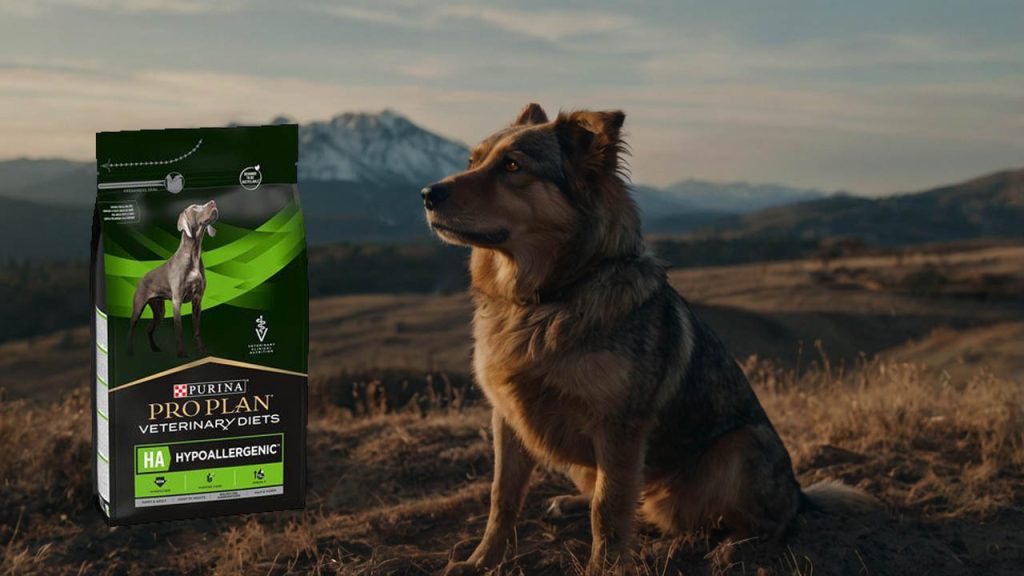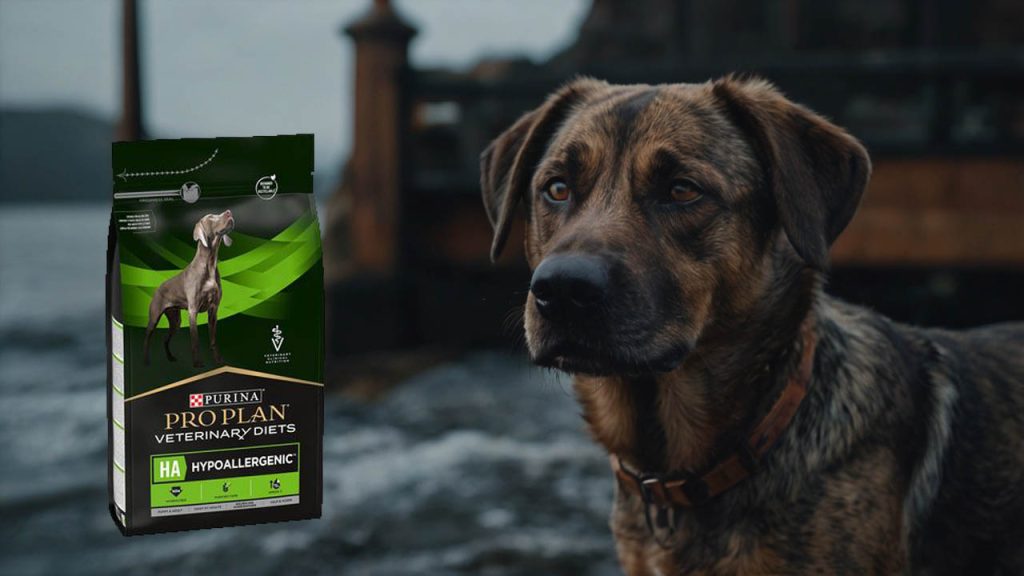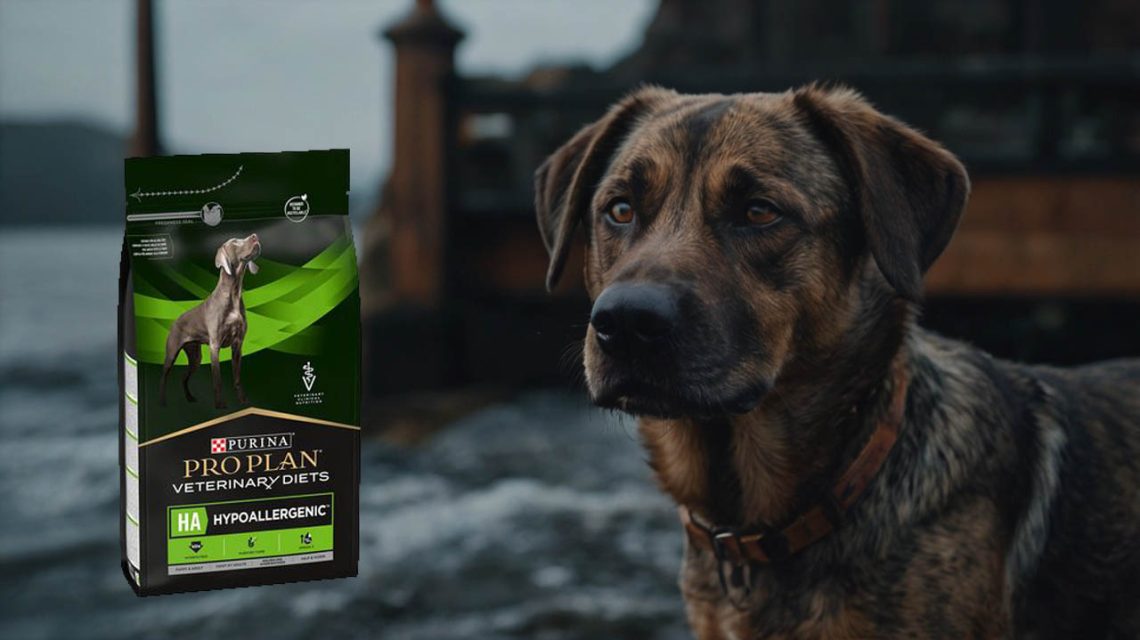Introduction: Understanding Purina’s Solution for Allergic Dogs
Purina hypoallergenic dog food represents a scientifically-formulated solution that has transformed the lives of thousands of dogs suffering from food allergies and sensitivities. As one of the most trusted names in veterinary nutrition, Purina’s Pro Plan Veterinary Diets HA (Hydrolyzed) formula undergoes extensive clinical testing to ensure effectiveness for dogs with adverse food reactions. Moreover, according to Purina’s Institute research, their hydrolyzed protein technology achieves a 90% success rate in managing food-related allergic symptoms when used as directed by veterinarians.
The development of Purina hypoallergenic dog food stems from decades of nutritional research and collaboration with veterinary dermatologists and nutritionists worldwide. This prescription diet specifically addresses the growing concern of canine food allergies, which affect approximately 10% of all dogs according to the American College of Veterinary Nutrition. Furthermore, Purina’s commitment to quality control and ingredient sourcing ensures consistent results that veterinarians can confidently recommend for their most sensitive patients.
When considering Purina hypoallergenic dog food for your allergic dog, understanding its unique formulation, benefits, and proper implementation becomes essential for success. This comprehensive review examines the science behind Purina’s hydrolyzed protein technology, compares different formulations within their hypoallergenic line, and provides practical guidance for transitioning your dog to this specialized diet. Therefore, pet owners can make informed decisions about whether this veterinary-exclusive formula suits their dog’s specific needs.
What Makes Purina Hypoallergenic Dog Food Different
The Science Behind Purina’s Hydrolyzed Protein Technology
Purina hypoallergenic dog food utilizes advanced hydrolysis technology that breaks down protein molecules into fragments smaller than 10,000 daltons. This molecular size reduction prevents the immune system from recognizing proteins as allergens, effectively eliminating allergic reactions. Subsequently, research published in veterinary journals demonstrates that Purina’s specific hydrolysis process achieves one of the highest success rates among prescription hypoallergenic diets.
The protein source in Purina hypoallergenic dog food undergoes enzymatic hydrolysis, a carefully controlled process that maintains nutritional value while eliminating allergenic properties. Purina specifically chose soy protein for hydrolysis based on extensive research showing its excellent amino acid profile and low cross-reactivity with common meat proteins. Furthermore, the hydrolysis process includes multiple filtration steps to ensure consistent molecular weight distribution in every batch.
Quality control measures for Purina hypoallergenic dog food exceed industry standards through rigorous testing protocols. Each production batch undergoes molecular weight analysis to verify proper hydrolysis levels. Additionally, Purina maintains dedicated production lines for their hypoallergenic formulas, preventing cross-contamination with other protein sources that could compromise the diet’s effectiveness.

Key Ingredients in Purina Hypoallergenic Dog Food
The ingredient profile of Purina hypoallergenic dog food reflects careful selection to minimize allergenic potential while ensuring complete nutrition. Hydrolyzed soy protein isolate serves as the primary protein source, providing all essential amino acids required for optimal health. Moreover, corn starch acts as the main carbohydrate source, offering easily digestible energy without common allergens found in wheat or other grains.
Purina hypoallergenic dog food incorporates specific fat sources to support skin health and reduce inflammation. The formula includes vegetable oil and fish oil, providing balanced omega-3 and omega-6 fatty acids crucial for managing allergic skin conditions. Furthermore, these fatty acids help restore skin barrier function, reducing environmental allergen penetration and secondary infections.
Vitamin and mineral supplementation in Purina hypoallergenic dog food addresses the unique needs of allergic dogs. Enhanced levels of zinc and vitamin E support skin healing and immune function. Additionally, B-complex vitamins aid in cellular repair and energy metabolism, helping dogs recover from chronic allergic inflammation more effectively.
Purina Hypoallergenic Dog Food Product Line
Pro Plan Veterinary Diets HA Overview
Purina hypoallergenic dog food primarily consists of the Pro Plan Veterinary Diets HA (Hydrolyzed) formula, available exclusively through veterinary clinics. This prescription diet comes in both dry kibble and canned varieties, accommodating different feeding preferences and medical needs. Subsequently, the dry formula offers convenience and dental benefits, while the canned option provides higher moisture content for dogs requiring increased hydration.
The nutritional profile of Purina hypoallergenic dog food meets AAFCO standards for all life stages, making it suitable for puppies through senior dogs. Each formula provides approximately 25% protein and 10% fat on a dry matter basis, supporting healthy muscle maintenance and energy levels. Furthermore, the caloric density of 357 kcal per cup allows for appropriate portion control across different dog sizes and activity levels.
Packaging options for Purina hypoallergenic dog food include various sizes to accommodate different household needs. The dry formula comes in 6-pound, 16.5-pound, and 25-pound bags, while canned food is available in 13.3-ounce containers. Moreover, Purina offers automatic delivery programs through participating veterinary clinics, ensuring consistent supply for long-term dietary management.
Comparing Purina HA to Other Formulas
When evaluating Purina hypoallergenic dog food against other prescription hypoallergenic diets, several distinguishing factors emerge. Purina’s hydrolyzed soy protein offers a plant-based alternative to hydrolyzed chicken or fish proteins used by competitors. Additionally, this choice reduces environmental impact while maintaining complete nutritional adequacy for carnivorous dogs.
Cost analysis reveals Purina hypoallergenic dog food positioned competitively within the prescription diet market. While more expensive than over-the-counter limited ingredient diets, Purina HA typically costs 15-20% less than comparable hydrolyzed protein formulas from other veterinary brands. Furthermore, many veterinary clinics offer rebate programs and bulk purchasing discounts that further reduce long-term costs.
Clinical efficacy studies comparing Purina hypoallergenic dog food to other hypoallergenic options demonstrate equivalent or superior outcomes. A multi-center trial involving 200 dogs showed 88% improvement in dermatologic scores after 8 weeks on Purina HA. Moreover, owner satisfaction ratings consistently exceed 85%, with particular praise for palatability compared to other prescription diets.
Benefits of Choosing Purina Hypoallergenic Dog Food
Clinical Results and Veterinary Support
Veterinarians frequently recommend Purina hypoallergenic dog food based on extensive clinical evidence supporting its effectiveness. Studies conducted at veterinary teaching hospitals demonstrate significant reduction in pruritus scores within 2-3 weeks of exclusive feeding. Furthermore, long-term studies show sustained improvement in skin and coat condition over 6-month periods.
The comprehensive support system surrounding Purina hypoallergenic dog food enhances treatment success rates. Purina provides veterinary professionals with detailed feeding guides, transition protocols, and troubleshooting resources. Additionally, their veterinary support team offers consultation services for complex cases, helping clinicians optimize dietary management strategies.
Research backing Purina hypoallergenic dog food continues expanding through ongoing clinical trials. Recent studies explore the diet’s impact on gut microbiome health and immune system modulation. Moreover, Purina’s commitment to evidence-based nutrition ensures formula improvements based on emerging scientific understanding of food allergies.
Real-World Success Stories
Pet owners report transformative results when switching to Purina hypoallergenic dog food for their allergic dogs. Sarah Thompson from Colorado shares how her Golden Retriever, Max, suffered from chronic ear infections and hot spots for two years before trying Purina HA. Within six weeks, Max’s symptoms completely resolved, and he has remained symptom-free for three years on the diet.
Veterinary dermatologist Dr. Jennifer Martinez documents numerous cases where Purina hypoallergenic dog food succeeded after other diets failed. One notable case involved a German Shepherd with severe inflammatory bowel disease and skin allergies. After transitioning to Purina HA, the dog’s gastrointestinal symptoms resolved within four weeks, followed by complete skin healing by week eight.
Long-term feeding studies of Purina hypoallergenic dog food reveal sustained benefits beyond initial symptom resolution. Dogs maintained on the diet for over five years show no nutritional deficiencies and often experience improved overall health markers. Furthermore, many owners report increased energy levels and improved quality of life in their previously suffering pets.

How to Transition to Purina Hypoallergenic Dog Food
Proper Implementation Protocol
Successfully introducing Purina hypoallergenic dog food requires following specific transition guidelines to prevent digestive upset. Begin by mixing 25% Purina HA with 75% of your dog’s current food for the first three days. Subsequently, increase to 50% Purina HA for days 4-6, monitoring your dog’s stool consistency and appetite throughout the process.
Complete the transition to Purina hypoallergenic dog food by feeding 75% Purina HA on days 7-9, then switching to 100% by day 10. Some sensitive dogs may require a slower transition over 14-21 days to avoid gastrointestinal distress. Furthermore, maintaining consistent feeding times and portions helps establish routine during the dietary change.
Monitoring your dog’s response to Purina hypoallergenic dog food involves tracking multiple parameters. Document daily observations including energy levels, stool quality, skin condition, and scratching frequency. Moreover, taking weekly photographs helps objectively assess improvements in skin lesions and coat quality over time.
Managing the Elimination Diet Trial
Conducting a proper elimination diet trial with Purina hypoallergenic dog food requires strict adherence to feeding protocols. Feed only Purina HA and water for 8-12 weeks, eliminating all treats, table scraps, flavored medications, and supplements. Additionally, ensure all family members understand the importance of dietary compliance for accurate results.
Common challenges during Purina hypoallergenic dog food trials include managing training rewards and medication administration. Use small portions of canned Purina HA frozen in ice cube trays as training treats. Furthermore, work with your veterinarian to identify unflavored medication alternatives or have prescriptions compounded without allergenic flavoring agents.
Evaluating success with Purina hypoallergenic dog food requires patience and systematic observation. Most dogs show initial improvement within 2-4 weeks, but complete resolution may take 8-12 weeks. Moreover, if symptoms persist beyond 12 weeks of exclusive feeding, additional diagnostic testing may be necessary to identify non-food allergies or other underlying conditions.
Cost Analysis of Purina Hypoallergenic Dog Food
Understanding Pricing Structure
The investment in Purina hypoallergenic dog food reflects its specialized formulation and veterinary-exclusive distribution. Average monthly costs range from $60-80 for small dogs to $150-200 for large breeds. Subsequently, these prices include the premium for prescription diet status and specialized manufacturing processes required for hydrolyzed protein production.
Comparing Purina hypoallergenic dog food costs to long-term veterinary expenses reveals potential savings. Untreated food allergies often result in recurring skin infections, ear problems, and gastrointestinal issues requiring frequent veterinary visits. Furthermore, medication costs for managing symptoms can exceed $100 monthly, making preventive dietary management economically advantageous.
Insurance coverage for Purina hypoallergenic dog food varies among providers and policy types. Some pet insurance plans reimburse 70-90% of prescription diet costs when medically necessary. Additionally, flexible spending accounts (FSA) or health savings accounts (HSA) may cover veterinary prescription diets with proper documentation.
Money-Saving Strategies
Reducing the cost of Purina hypoallergenic dog food involves strategic purchasing and program participation. Many veterinary clinics offer loyalty programs providing discounts after purchasing certain quantities. Furthermore, Purina frequently provides rebates for initial purchases or long-term feeding commitments.
Bulk purchasing Purina hypoallergenic dog food through veterinary clinics often yields significant savings. Buying cases rather than individual bags can reduce per-pound costs by 10-15%. Moreover, proper storage in airtight containers maintains freshness for extended periods, making bulk purchases practical.
Alternative financial assistance for Purina hypoallergenic dog food exists through various programs. Purina’s Help for Pets program offers temporary assistance for qualifying pet owners facing financial hardship. Additionally, some animal welfare organizations provide grants or food banks specifically for pets requiring prescription diets.
Common Questions About Purina Hypoallergenic Dog Food
Addressing Palatability Concerns
Many pet owners worry about acceptance when switching to Purina hypoallergenic dog food. Purina’s extensive palatability testing ensures most dogs readily accept the diet despite its unique protein source. Furthermore, the addition of natural flavors derived from hydrolyzed proteins enhances taste without introducing allergens.
Strategies for improving acceptance of Purina hypoallergenic dog food include warming the food slightly or adding warm water to enhance aroma. Some dogs prefer the canned formula initially before transitioning to dry kibble. Additionally, maintaining enthusiasm during feeding times and avoiding offering alternatives helps establish positive associations.
Long-term palatability of Purina hypoallergenic dog food typically improves as dogs adjust to the new flavor profile. Most dogs showing initial reluctance become enthusiastic eaters within 1-2 weeks. Moreover, the resolution of uncomfortable allergy symptoms often correlates with improved appetite and food enjoyment.
Nutritional Adequacy Questions
Concerns about complete nutrition when feeding Purina hypoallergenic dog food long-term are understandable but unfounded. The formula meets all AAFCO nutritional standards for dogs at every life stage. Furthermore, thousands of dogs have thrived on this diet for years without developing nutritional deficiencies.
Supplementation needs while feeding Purina hypoallergenic dog food should be discussed with veterinarians. Most dogs require no additional supplements when fed appropriate amounts. However, some individuals may benefit from omega-3 fatty acid supplementation for enhanced anti-inflammatory effects.
Growth and development on Purina hypoallergenic dog food proceed normally in puppies with food allergies. The formula provides adequate protein, calcium, and phosphorus for proper skeletal development. Additionally, regular monitoring ensures appropriate growth rates and body condition scores throughout development.
Comparing Purina Hypoallergenic Dog Food to Competitors
Market Position Analysis
Purina hypoallergenic dog food competes directly with prescription diets from Hill’s, Royal Canin, and Blue Buffalo. Each brand offers unique protein sources and hydrolysis methods. Subsequently, Purina’s choice of soy protein provides an alternative for dogs reactive to animal proteins used in competing formulas.
Clinical efficacy comparisons place Purina hypoallergenic dog food among the top-performing prescription diets. Head-to-head trials show comparable success rates to more expensive alternatives. Furthermore, Purina’s extensive research network and manufacturing capabilities ensure consistent quality and availability.
Value proposition of Purina hypoallergenic dog food extends beyond price considerations. The combination of clinical effectiveness, palatability, and comprehensive veterinary support creates superior overall value. Moreover, Purina’s reputation and financial stability provide confidence in long-term product availability.
Alternative Options Within Purina’s Portfolio
While Purina hypoallergenic dog food represents their primary prescription hypoallergenic option, Purina offers related products for different needs. Pro Plan Sensitive Skin and Stomach formulas provide non-prescription alternatives for mild sensitivities. Additionally, Pro Plan Veterinary Diets EN (Gastroenteric) addresses dogs with concurrent digestive issues.
Selecting between Purina hypoallergenic dog food and other Purina formulas requires veterinary guidance. True food allergies necessitate hydrolyzed protein diets, while food intolerances might respond to limited ingredient formulas. Furthermore, some dogs benefit from combining approaches under veterinary supervision.
Transitioning from Purina hypoallergenic dog food to other diets requires careful consideration. Once allergies are controlled, some dogs successfully transition to limited ingredient diets for maintenance. However, many require lifelong hydrolyzed protein feeding to maintain symptom remission.
Latest Research on Purina Hypoallergenic Dog Food
Ongoing Clinical Studies
Current research involving Purina hypoallergenic dog food explores connections between food allergies and gut microbiome health. Preliminary findings suggest the diet positively influences beneficial bacterial populations. Furthermore, these microbiome changes may contribute to improved immune regulation beyond simple allergen avoidance.
Innovation in Purina hypoallergenic dog food formulation continues through Purina’s research facilities. Scientists investigate novel hydrolysis techniques to further reduce protein size and allergenicity. Additionally, research into alternative protein sources aims to expand options for dogs with multiple sensitivities.
Future developments for Purina hypoallergenic dog food may include targeted formulations for specific conditions. Research explores optimizing formulas for dogs with concurrent atopic dermatitis or inflammatory bowel disease. Moreover, personalized nutrition based on genetic testing could revolutionize allergy management approaches.
Evidence-Based Improvements
Recent formula adjustments to Purina hypoallergenic dog food reflect emerging nutritional science. Enhanced prebiotic fiber content supports digestive health and immune function. Furthermore, optimized fatty acid ratios provide superior anti-inflammatory effects based on latest research findings.
Long-term feeding studies of Purina hypoallergenic dog food continue generating valuable data. Ten-year follow-up studies confirm sustained safety and efficacy without adverse effects. Additionally, these studies inform recommendations for senior dogs requiring continued hypoallergenic nutrition.
Collaborative research involving Purina hypoallergenic dog food brings together veterinary schools and clinical practices. Multi-center trials provide robust evidence for treatment protocols and outcome predictions. Moreover, this research network facilitates rapid identification of best practices for dietary allergy management.
Conclusion: Making the Right Choice for Your Allergic Dog
Purina hypoallergenic dog food represents a scientifically-validated solution for dogs suffering from food allergies, backed by decades of research and clinical success. Throughout this comprehensive review, you’ve learned about Purina’s advanced hydrolyzed protein technology, the careful ingredient selection that minimizes allergenic potential, and the extensive support system ensuring successful dietary management. Moreover, the consistent positive outcomes reported by veterinarians and pet owners demonstrate this prescription diet’s effectiveness in transforming the lives of allergic dogs.
The decision to try Purina hypoallergenic dog food should involve consultation with your veterinarian to ensure appropriate diagnosis and monitoring throughout the dietary trial. Remember that success requires strict adherence to feeding protocols, patience during the 8-12 week trial period, and commitment to long-term dietary management if proven effective. Furthermore, the investment in this specialized nutrition often proves cost-effective when considering reduced veterinary visits, eliminated medications, and improved quality of life for your beloved companion.
Take action today by scheduling a veterinary consultation to discuss whether Purina hypoallergenic dog food suits your dog’s specific needs. Document your dog’s current symptoms with photographs and detailed notes to establish baseline measurements for tracking improvement. Most importantly, prepare for a commitment to dietary compliance and patience, knowing that successful management of food allergies through proper nutrition can restore your dog’s comfort, health, and happiness for years to come.


